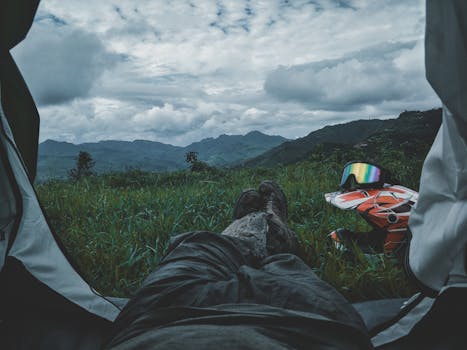
Nagaland
Explore the beauty, culture, and attractions of Nagaland.
Top Attractions
3 Days in Kohima for a Flavorful Food Trip
Kohima is a hidden gem for food lovers, where every meal tells a story of Naga culture and traditions. Over three days, you'll taste everything from smoky pork dishes to fiery chutneys, all while soaking in the warm hospitality of the locals. I've put together this itinerary based on my own favorite spots and must-try dishes that make Kohima's food scene so special.
Trip Highlights
Best Time to Visit
Share Your Adventure
Spread the word about this amazing trip!
Day 1
Day 1 in Kohima
Start your Kohima adventure with its most iconic sights and flavors, from war history to vibrant markets and Naga cuisine.
Activities
Kohima War Cemetery
Pay respects at this beautifully maintained WWII cemetery, where the Battle of Kohima marked a turning point in the Burma Campaign. The epitaph 'When you go home, tell them of us and say, for your tomorrow, we gave our today' gives chills every time.
- Wear comfortable shoes for the sloping pathways
- The caretaker often shares fascinating battlefield stories if you ask politely
Kohima State Museum
Get schooled in Naga heritage through tribal artifacts, ceremonial costumes, and traditional weapons. Don't miss the fascinating collection of hornbill feathers and warrior headhunting relics - they'll make you see Naga culture in a whole new light.
- Photography requires a ₹50 permit
- The wooden Naga morungs (youth dormitories) replicas outside are great photo ops
Naga Bazaar & Local Eats
Dive into Kohima's bustling main market where tribal women sell smoked meats, fiery king chilies, and bamboo shoot pickles. Grab lunch at nearby 'Zakhama's Kitchen' for authentic pork with axone (fermented soybean) or try 'Dzükou Tribal Kitchen' for smoked beef with akhuni.
- Bargain gently at the market - these are mostly farmer-sellers
- Try the sticky rice beer if you're feeling adventurous
Must Try Foods
Transportation
No destinations found for this itinerary
Day 2
Day 2 in Kohima
A mix of nature, culture, and local flavors, diving deeper into Kohima's unique Naga heritage and scenic beauty.
Activities
Dzukou Valley Trek
Start early for a trek to Dzukou Valley, known as the 'Valley of Flowers of the Northeast.' The moderate hike takes you through lush greenery, bamboo forests, and opens up to stunning views of rolling hills and seasonal flowers. The valley is especially magical in monsoon when it’s carpeted with blooms. Pack light but carry water and snacks—there’s a small shack at the top serving basic Naga meals.
- Wear sturdy shoes—the trail can be slippery.
- Hire a local guide for safer navigation; they often share fascinating stories about the valley.
Kisama Heritage Village
Head to Kisama, the permanent site of the famous Hornbill Festival. Even outside the festival, it’s a great place to see traditional Naga huts (morungs), handicrafts, and learn about tribal customs. The village comes alive with cultural performances on weekends. Don’t miss the small stalls selling local honey, smoked meats, and handwoven shawls.
- Try the smoked pork sold at stalls—it’s a Naga specialty.
- Weekends are livelier with more cultural activities.
Evening at Japfü Peak
Wrap up the day with a short drive to Japfü Peak, the second-highest in Nagaland. The sunset views over Kohima are breathtaking. The trail is gentle, perfect for a relaxed walk. Local vendors near the base sell steaming cups of black tea and momos—ideal for a quick bite while soaking in the scenery.
- Carry a jacket—it gets chilly after sunset.
- Stay quiet to spot occasional wildlife like pheasants.
Must Try Foods
Transportation
Day 3
Hidden Gems of Kohima
A relaxed day uncovering Kohima’s lesser-known spots, from serene viewpoints to local markets and authentic Naga flavors.
Activities
Morning at Pulie Badze Wildlife Sanctuary
Start your day with a peaceful walk through this quiet sanctuary, just a short drive from Kohima. The trails are gentle, and if you’re lucky, you might spot some exotic birds or even the occasional barking deer. The real highlight is the view from the top—rolling green hills and a sense of calm you won’t find in the busier parts of town.
- Wear comfortable walking shoes—the trails are easy but can be muddy after rain.
- Bring binoculars if you’re into birdwatching; the sanctuary is home to several rare species.
Explore Khonoma Village
Head to Khonoma, often called Asia’s first green village, known for its sustainable farming and rich Angami Naga culture. Stroll through terraced fields, learn about the village’s history of resistance, and admire the traditional wooden houses. The locals are friendly and often happy to share stories about their way of life.
- Try to arrange a guided walk with a villager—they’ll give you insights you’d miss on your own.
- Respect the local customs; ask before taking photos of people or homes.
Evening at Kuda Market
Wrap up your trip with a visit to Kuda Market, a smaller, less touristy alternative to Naga Bazaar. Here, you’ll find fresh produce, handmade crafts, and a chance to chat with local vendors. Pick up some smoked meats or bamboo shoot pickles to take home—they’re a taste of Nagaland you won’t forget.
- Carry small change—vendors often don’t have change for large bills.
- Try the smoked fish or pork; it’s a local specialty and perfect for a light dinner.





